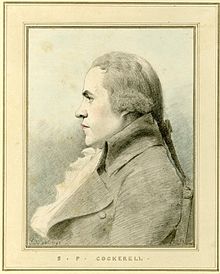Tyburnia

Tyburnia,a part ofPaddingtoninLondon,originally developed following an 1824 masterplan drawn up bySamuel Pepys Cockerell(1753–1827) to redevelop the historic lands of theBishop of London,known as theTyburnEstate, into a residential area to rivalBelgravia.Tyburnia was the first part of Paddington to be developed.[1]
Area
[edit]
The area called Tyburnia has varied over time and it was never finished according to the original plan but it is certainly bounded byEdgware Roadin the east andBayswater Roadand Hyde Park Place in the south. The northern boundary is generally regarded asCraven RoadandPraed Street,while the western boundary is generally regarded asGloucester Terrace.Sussex Gardensprovides the main axis of the area, off which other streets run.[2]It features severalgarden squaresincludingNorfolk Square,Talbot Square,Hyde Park SquareandSussex Square.Streets includeAlbion Street,Stanhope Terrace,Connaught StreetandConnaught Place.St George's Fieldsis also located in the area.
History
[edit]
The district formed the centrepiece of an 1824 masterplan by Samuel Pepys Cockerell to redevelop the historic lands of the Bishop of London, known as the Tyburn Estate,[3]into a residential area to rivalBelgravia.[4]It was the first part of Paddington to be developed.[5]
The area was laid out in the mid-1800s when grand squares and cream-stuccoedterraces started to fill the acres between Paddington station and Hyde Park; however, the plans were never realised in full. The authorWilliam Makepeace Thackeray,who lived in Albion Street, described the district as "the elegant, the prosperous, the polite Tyburnia, the most respectable district of the habitable globe."[6]
References
[edit]- ^
Robins, William (1853).Paddington: past and present.p. 195.Retrieved8 January2023.
The transition-state from an agricultural village to the fashionable Tyburnia, was no very agreeable time for the majority of those who lived in Paddington.
- ^Cherry, Bridget & Pevsner, Nikolaus.London 3: North West.Yale University Press, 2002. p.684
- ^"Tyburnia – A History of the Paddington Estates".Hyde Park Square Garden. 20 October 2014.Retrieved11 June2017.
- ^Walford, Edward."Tyburn and Tyburnia".Old and New London: Volume 5.British History Online.Retrieved11 June2017.
- ^T. F. T. Baker, Diane K. Bolton and Patricia E. C. Croot (1989)."'Paddington: Tyburnia' inA History of the County of Middlesex: Volume 9, Hampstead, Paddington".British History Online. pp. 190–198.Retrieved11 June2017.
- ^Brewer, E. Cobham."Brewer's Dictionary of Phrase and Fable (1898)".Bartleby.com.Retrieved11 June2017.
External links
[edit]![]() Media related toTyburniaat Wikimedia Commons
Media related toTyburniaat Wikimedia Commons

